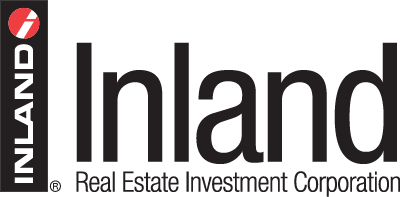In commercial real estate investing, two tax-advantaged strategies have garnered significant attention and popularity among seasoned financial professionals: the 1031 exchange and the 721 exchange/UPREIT structures. These strategies offer unique advantages and considerations for owners of investment real estate properties.
In this blog, we look into the key differences between these two solutions and highlight the factors that could influence this crucial decision-making process.
The Popularity of the 1031 Exchange
Let's start with the popular 1031 exchange. This strategy, which has been utilized for over a century, revolves around the concept of deferring capital gains taxes on the sale of an investment property by reinvesting in a like-kind property or properties. It is important to note that the 1031 exchange is exclusively available to investors who already own investment real estate property.
The benefits of a 1031 exchange are significant and include:
-
Tax Deferral: The primary motivation behind a 1031 exchange is the deferral of capital gains taxes, allowing investors to reinvest their entire proceeds into a new property.
-
Portfolio Growth and Improvement: A 1031 exchange may allow an investor to upgrade to another property or properties, potentially creating a more diversified portfolio.
-
Estate Planning Tool: A 1031 exchange into a program structured as a Delaware Statutory Trust (DST) can also serve as a valuable estate planning tool, allowing for the tax-advantaged preservation and transfer of wealth to future generations. Should a holder of DST interests pass away, current tax laws offer a “step-up” in cost basis, meaning heirs will not inherit capital gain liabilities. Upon the sale of the property owned by the DST, each heir can choose what to do with their inherited DST interests. Heirs may receive distributions paid from the property investment, if any, should they choose to continue with the investment.
-
Diversification: The DST structure often utilized by 1031 exchangers can often provide access to a portfolio of several properties that vary by asset type and geography.
However, it's important to acknowledge that strict regulations and timelines (a 45-day identification period and a 180-day exchange period) can be challenging and underscore the importance of meticulous planning when executing a successful 1031 exchange.
Exploring the 721 Exchange/UPREIT
Now, let's discuss the 721 exchange into an UPREIT, a strategy with its own set of advantages and considerations. If structured correctly, a 721 exchange allows property owners to exchange investment properties for partnership units in the operating partnership of a real estate investment trust (REIT).
Potential benefits of the 721 exchange/UPREIT include:
-
Tax Deferral with Future Liquidity: Tax deferral in a 721 exchange is achieved by exchanging the investor’s existing property for limited partnership units in the operating partnership of a REIT structured as an “umbrella partnership real estate investment trust” (UPREIT). After holding the units for a period of time, typically 1-2 years, the limited partnership units may be redeemed for cash or for shares in the REIT.
-
Diversification Across a Managed Portfolio: UPREITs offer investors the opportunity to diversify across a professionally managed real estate portfolio, providing access to a broad range of properties and geographical regions.
However, there are certain limitations associated with the 721 exchange to consider.
-
Complexity: The structure of UPREITs can be complicated, requiring a thorough understanding of the intricacies involved.
-
Property Acceptance: Most often investors interested in a 721 exchange will not be able to exchange their property directly into an UPREIT structure and may need to participate in the ownership of a DST that is structured to eventually engage in a 721 exchange/UPREIT transaction.
-
Loss of Direct Management Control: Property owners relinquish direct hands-on management of their properties as they become unitholders in a managed portfolio through a 721 exchange/UPREIT.
Tailoring Strategies to Investment Objectives
Choosing between a 1031 exchange and a 721 exchange/UPREIT depends on each investors’ profile and investment objectives.
1031 exchanges may be more suitable for:
-
Experienced property owners looking to defer taxes and improve cash flow or appreciation in their portfolio with newer or better-quality properties.
-
Investors who desire the choice of either passive ownership through a DST or hands-on property management in the future.
-
Individuals who want to diversify their real estate investments with a portfolio of professionally managed properties.
On the other hand, 721 exchanges/UPREITs are often preferred by:
-
Property owners seeking diversification without the future burden of direct property management.
-
Individuals interested in tax deferral while accessing a professionally managed REIT portfolio.
-
Investors who ultimately would like to have more potential liquidity options with their investment.
Guiding the Decision-Making Process
Seasoned financial professionals are well-equipped to evaluate these investment strategies. Property owners and their financial professionals will also want to engage with legal, tax, and real estate professionals who specialize in these exchanges to ensure that all interests are protected and that they comply with all regulations.
The decision between a 1031 exchange and a 721 exchange is pivotal for investment real estate property owners. The role of a trusted financial professional is to guide appropriate investors toward the most fitting tax-advantaged investment strategy based on their unique circumstances.

